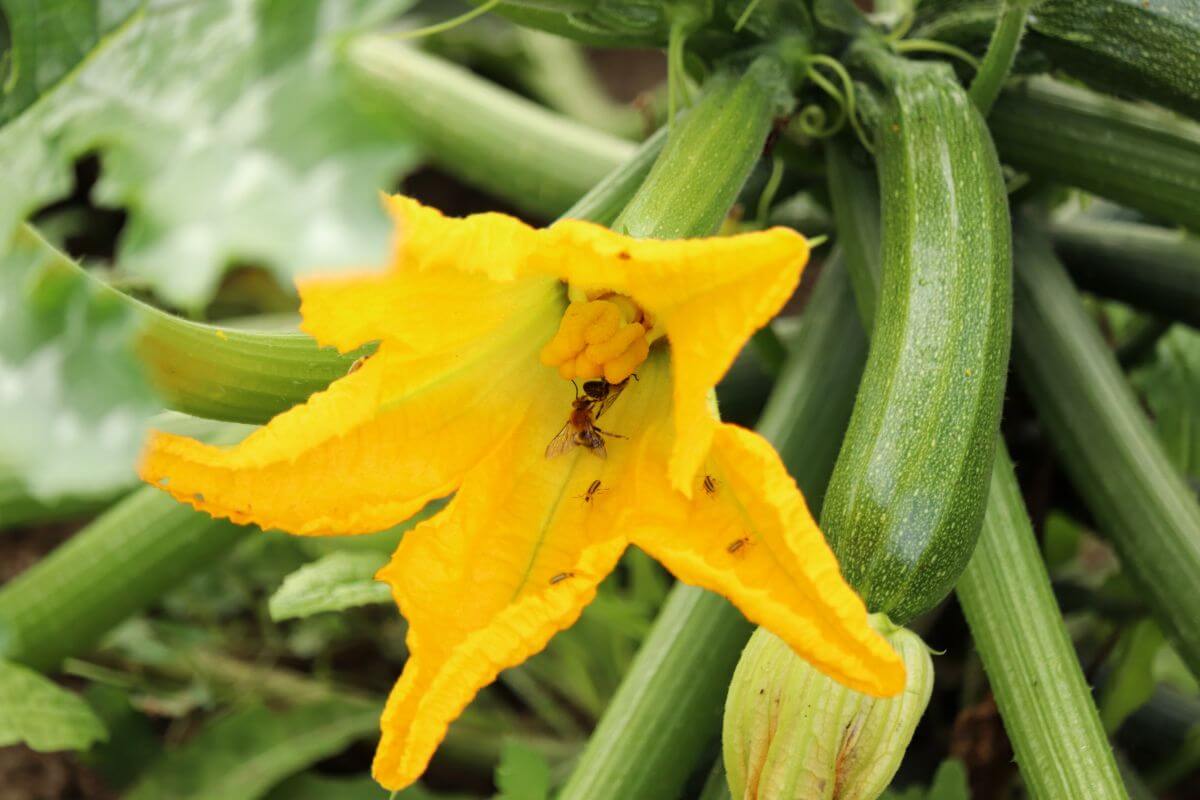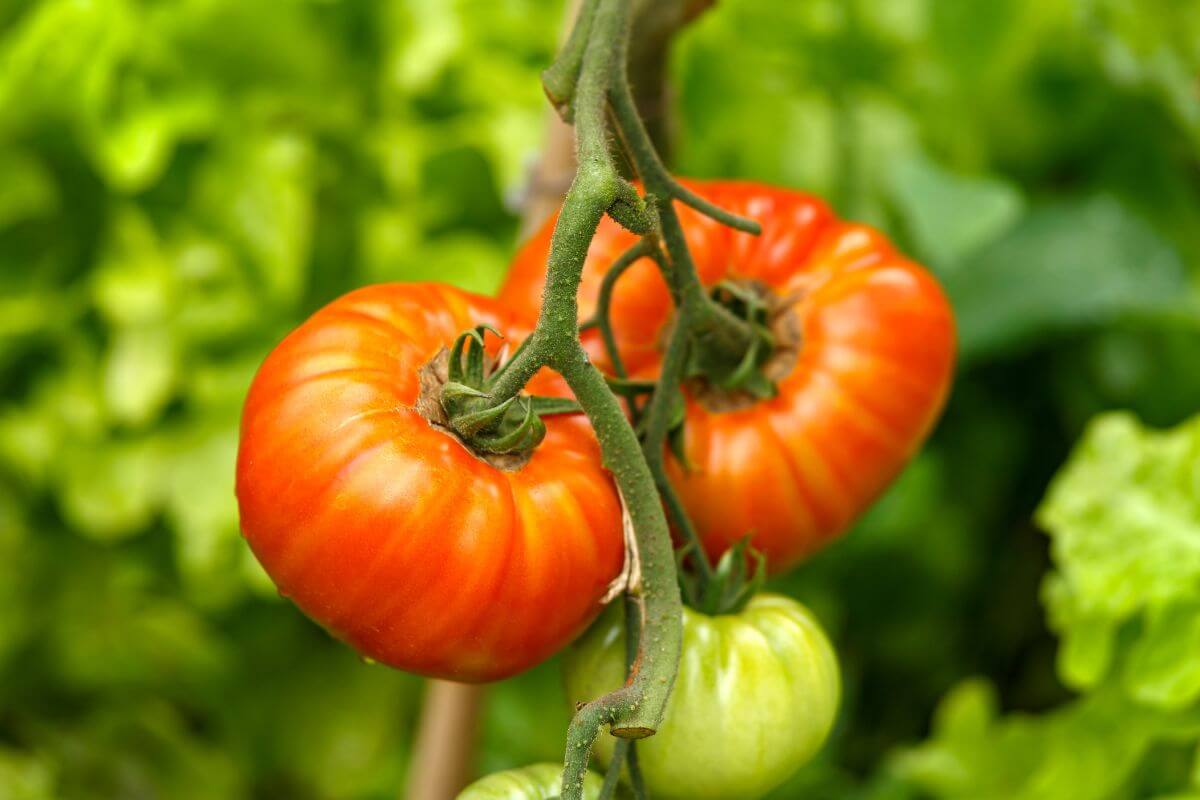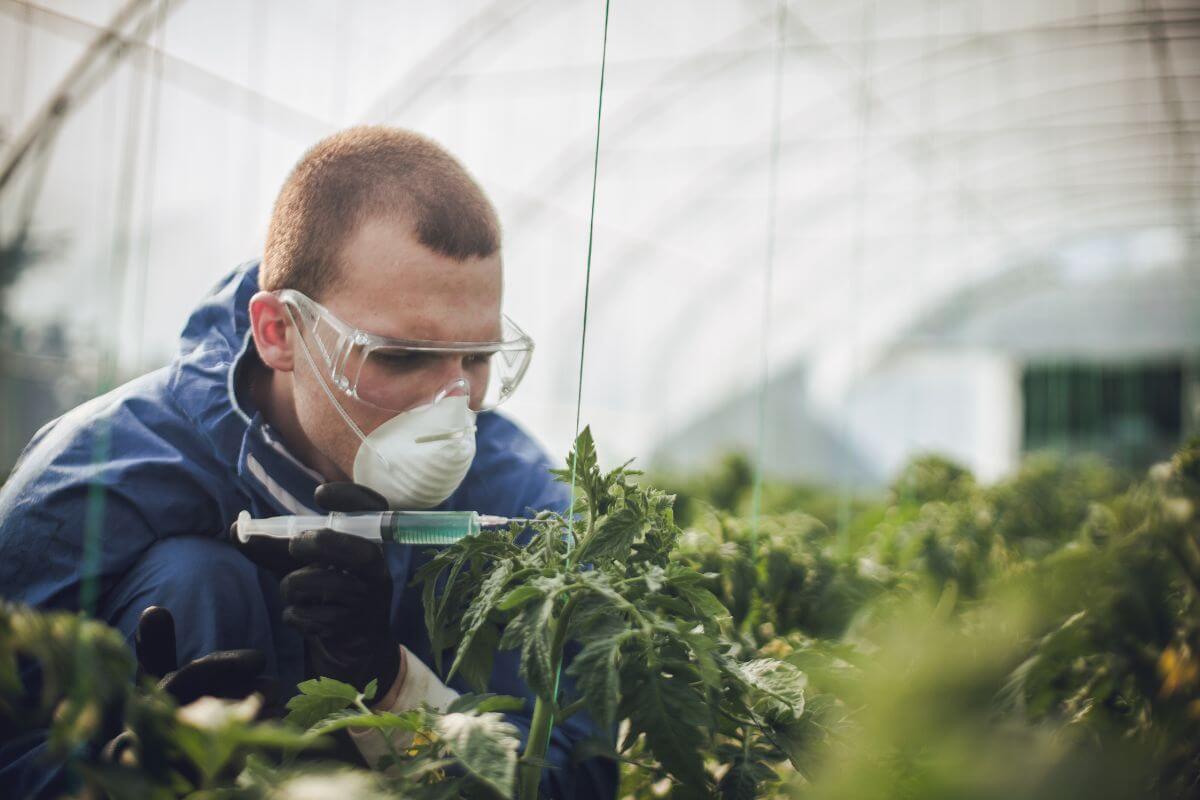Many people don’t know about “open-pollination.” But it’s becoming popular as more folks want organic, chemical-free, and unmodified plants and seeds.
Health-conscious gardeners care about where their seeds and plants come from. They often compare Open Pollinated vs Hybrid vs Heirloom.
Not many realize that many plants we grow and eat are F1 hybrids. Open-pollinated plants are pollinated naturally and keep producing good types of seeds each generation.
I will discuss the differences between open-pollinated and hybrid plants and also talk about self-pollinated and heirloom varieties.
- Related article: Open Pollination Explained
7 Key Takeaways on Open Pollinated vs Hybrid
- Open-pollinated plants are naturally pollinated by wind, insects, or birds. They produce seed types that reliably grow into plants similar to their parent, fostering genetic continuity.
- F1 hybrid plants are created through deliberate cross-pollination. They combine desirable traits but their seeds do not breed true, making them unsuitable for seed saving.
- Heirloom plants are a subset of open-pollinated varieties with historical significance. They preserve genetic diversity and cultural heritage through generations.
- Self-pollinating plants, like “perfect” flowers, ensure genetic purity as they fertilize themselves within the same flower. They are ideal for small gardens.
- GMO crops are genetically modified for specific traits like pest resistance. They pose challenges as their patented genes can spread and impact organic farming practices.
- Open pollination supports sustainable agriculture by allowing seed saving and adaptation to local environments. They promote biodiversity and local food control.
- While hybrids and GMOs offer certain agricultural advantages, open-pollinated and heirloom varieties appeal to gardeners seeking diversity, flavor, and sustainability in their crops.
What Are Open-Pollinated Plants?

Open pollination happens when nature takes charge of plant reproduction. Insects, birds, and wind help plants make seeds. These seeds grow into plants that look just like their parents. We call them “true-breeding” plants.
Gardeners love open-pollinated plants. Why? You can save the seeds and plant them again next year. This keeps special plant types alive and helps maintain plant diversity. Over time, these plants get better at growing in your local area.
Open pollination supports traditional farming and food independence. You can freely save, use, and share the seeds. Did you know that all heirloom plants are open-pollinated? But not all open-pollinated plants are heirlooms. Heirlooms are old varieties passed down through families.
Here’s a cool fact: open pollination boosts biodiversity. It lets plants change naturally over time. Even plants that pollinate themselves can be open-pollinated if humans don’t interfere.
There are lots of crops that you can grow with open-pollination. One crop that I grow and recommend is corn. You can find different varieties of open-pollinated corn seed on Amazon that you can grow, here are some seeds that I recommend:
Comparing Open Pollinated vs F1 Hybrid Plants

Open-pollinated plants and F1 hybrid plants have distinct characteristics when it comes to their pollination methods, breeding, and other traits. Here’s a comparison:
| Feature | Open-Pollinated Plants | F1 Hybrid Plants |
|---|---|---|
| Pollination Method | Naturally pollinated by wind, insects, birds, or other natural ways without human intervention | Deliberately cross-pollinated between two different parent plants |
| Breeding True | Seeds produce new plants very similar to the parent plants | Seeds do not grow into plants identical to the parent plants |
| Cost of Seeds | Usually less expensive | Hybrid seeds are usually more expensive due to the work involved in creating them |
| Genetic Diversity | Offers genetic diversity, which can help with resilience but may cause more variability in the plants | Bred for uniformity, disease resistance, pest resistance, and other desirable traits |
| Flavor | Often more flavorful | Sometimes less flavorful compared to open-pollinated heirlooms |
| Seed Saving | Seeds can be saved and will produce similar plants | Generally not recommended to save seeds because new plants won’t have the same desirable traits |
| Common Usage | Often heirlooms, passed down for generations, commonly found in seed catalogs | Used for their combined best traits from parent varieties, but do not breed true in subsequent generations |
Comparing Open Pollinated vs Heirloom Plants
The term ‘heirloom’ refers to open-pollinated varieties that are 50 or more years old. They are our horticultural heritage and have often been kept going by single families.
The difference between heirloom and open-pollinated is the age difference. The heirloom variety is often passed down family generations but also passed from gardener to gardener sometimes.
| Feature | Heirloom Plants | Open-Pollinated Plants |
|---|---|---|
| Historical Significance | Considered horticultural heritage, often kept by single families | No specific age requirement |
| Generational Passage | Passed down family generations, sometimes from gardener to gardener | Can be shared among gardeners, promoting genetic diversity |
| Examples | Cherokee Trail of Tears bean (Cherokee Black) | Many varieties (peas, beans, tomatoes, corn, etc.) |
| Availability | Widely available due to a resurgence in interest | Commonly found in seed catalogs |
| Flavor and Characteristics | Often unique in flavor, reflecting historical and cultural significance | Provides genetic diversity and resilience, but may cause variability in plants |
| Cultural Connection | Connects us to history by tasting the food of our ancestors | Contributes to the preservation and revival of nearly extinct plant species |
If you want to start growing heirloom plants, a great starting crop to grow is tomato. The benefits of open-pollinated heirloom tomatoes include richer and juicier flavors, resistance to certain pests, and better adaptability to local soil and climate. Here are some of my recommendations:
Comparing Open Pollinated vs Self Pollinated Plants
Self-pollinating plants do what their name says. They pollinate themselves, either within one flower or between flowers on the same plant.
These plants are often called “perfect” flowers. They have both the pistil and stigma in one flower. When the flower opens, a bit of wind is usually enough to make it self-pollinate. If not, shaking the plant helps the pollen fall onto the stigma.
These plants are usually open-pollinated because cross-pollination rarely happens. You can grow many self-pollinating plants in a small space without worrying about cross-pollination.
Comparing Open Pollinated vs GMO Plants

Genetically modified (GMO) plants are designed to resist diseases and pests. They are not like hybrids that are bred for specific traits. GMOs have their DNA changed to withstand heavy insecticide use and even kill pests.
These crops are patented by big companies. They can spread quickly and might mix with organic crops. This causes problems for organic farmers.
GMOs are said to be a solution to global hunger. But some critics say the creators could solve hunger with their own money. Instead, companies make money by selling GMO crops and chemicals. They claim these crops give high yields with little upkeep.
But this can lower produce prices. It hurts farmers who use more eco-friendly methods.
Final Thoughts on Open Pollination Comparisons
You won’t notice much difference in most seed comparisons. The big difference is with Hybrid varieties because they produce hardy, standardized plants. But their offspring won’t be the same.
Open-pollinated and heirloom seeds can be just as hardy. They might produce more diverse plants. Self-pollinating plants stay true to type, even if grown close to other varieties.
If you want to save seeds, choose open-pollinated plants. They stay true to type for generations. You can buy open-pollinated seeds on Amazon (check latest prices) or from sites like rareseeds.com and seedsavers.org.
You can save seeds from hybrids, but it’s less predictable since the offspring won’t be like the parent plant.
Open Pollination Comparison FAQs
1. Can Seeds From Hybrid Plants Be Saved for Replanting?
No, hybrid seeds do not breed true. They produce offspring with a mix of traits from the parent plants, making seed saving unreliable for maintaining specific characteristics.
2. What Advantages Do GMO Crops Offer?
GMO crops are genetically modified to resist pests and diseases, potentially increasing yields and reducing the need for chemical pesticides.
3. How Can Open Pollination Benefit Sustainable Agriculture?
Open pollination supports sustainable farming by allowing farmers to save seeds, adapt crops to local conditions, and maintain biodiversity without reliance on commercial seed purchases.





